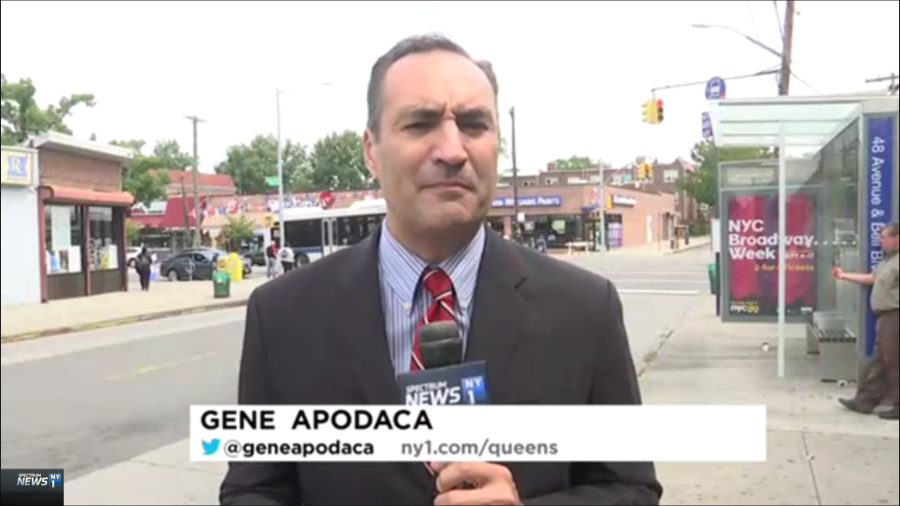As New York is considering congestion pricing, we wanted to focus on what it would mean for Eastern Queens. New York One recently asked to interview one of our supporters. We’re glad they were able to dig below the surface to look at some of the complexity of the issue.
There are many different ways New York could implement a system that includes congestion pricing. Many cities have done this previously, from Rome to Singapore to San Diego. London implemented a standard plan almost 15 years ago that has decreased peak hour trips into the city center by 33%.
The most comprehensive New York-focused plan being discussed is MoveNY, developed in part by former NYC Traffic Commissioner “Gridlock” Sam Schwartz. This plan does not increase the costs on all bridges and tunnels into Manhattan (as is sometimes reported); instead, it makes the tolls on all East River bridges/tunnels equal, increasing some but decreasing others bridges (including toll reductions on the Throgs Neck, Whitestone, and Triborough Bridges). This will end the practice of “bridge shopping”, in which trucks will drive miles out of their way just to get to a cheaper toll (both on the Manhattan and Queens sides of the river). Eliminating this needless driving will decrease traffic, drop air pollution (trucks are often the worst offenders), and avoid car crashes in our neighboring communities.
Our bridges and tunnels don’t toll our residences for moving between boroughs; congestion pricing only tolls people who bring their cars with them. According to the MoveNY proposal, the East River crossings would be $5.54 per car. We hope this would encourage drivers to car pool, dropping the toll to under $1.39 for each of the four people in a standard car (in comparison, getting from Bayside to the Financial District using the LIRR & subway currently cost a resident $13.00 per trip). The toll on the car is a minor cost in comparison to the parking lot fees each trip to Manhattan costs residents choosing to bring their cars; parking can be $19.43 for the first hour (plus tax) and street parking could be $3.50 per hour (if you can find any). Households with cars in Queens generally earn over twice as much as Queens households without cars, so any movement of money from drivers to transit riders would be considered progressive.
Decreasing the number of cars in the city center would be great for Eastern Queens residents who work in Manhattan. Over 50% of Queens residents commute to work by public transportation, while only 32% drive to work alone. Over 36% of households in Queens don’t even own cars.
The largest benefit of the MoveNY plan is how it can reshape transportation in Eastern Queens for the better. The plan includes:
- Extending the LIRR CityTicket (currently $4.25 LIRR rides within New York City only on weekends) to be 7 days a week
- Creating discount fares for low-income New Yorkers
- Decreasing Express Bus fares by $1.00
- Creating a new combined LIRR/Metrocard
- Creating a new tri-borough subway line connecting Queens to Brooklyn and the Bronx
- Make more subway station wheelchair accessible
- Maintaining our bridges, tunnels, and transit infrastructure
To ensure that the money gathered actually goes to transit, it would be locked into bonds, so it couldn’t be used to fund shortfalls in the general state budget.
Congestion pricing is a well-researched proposal by industry experts that represents the best solution for Queens commuters. The status quo is not safe, and the situation deteriorates more every day. Let’s work together to make Queens transportation better for everyone. Please sign this petition and spread the word.

